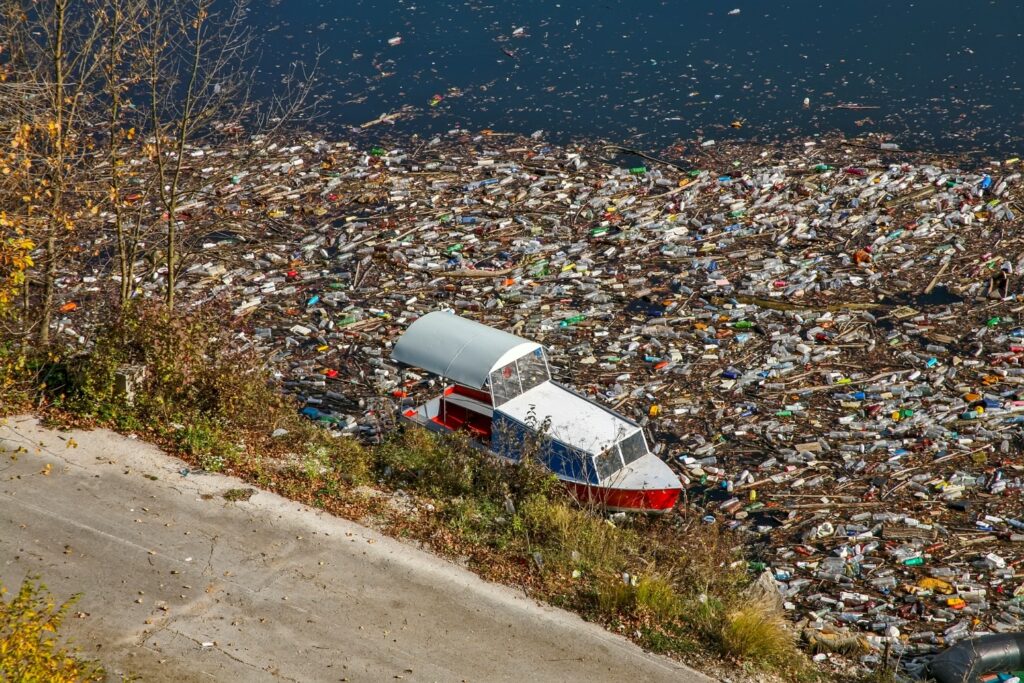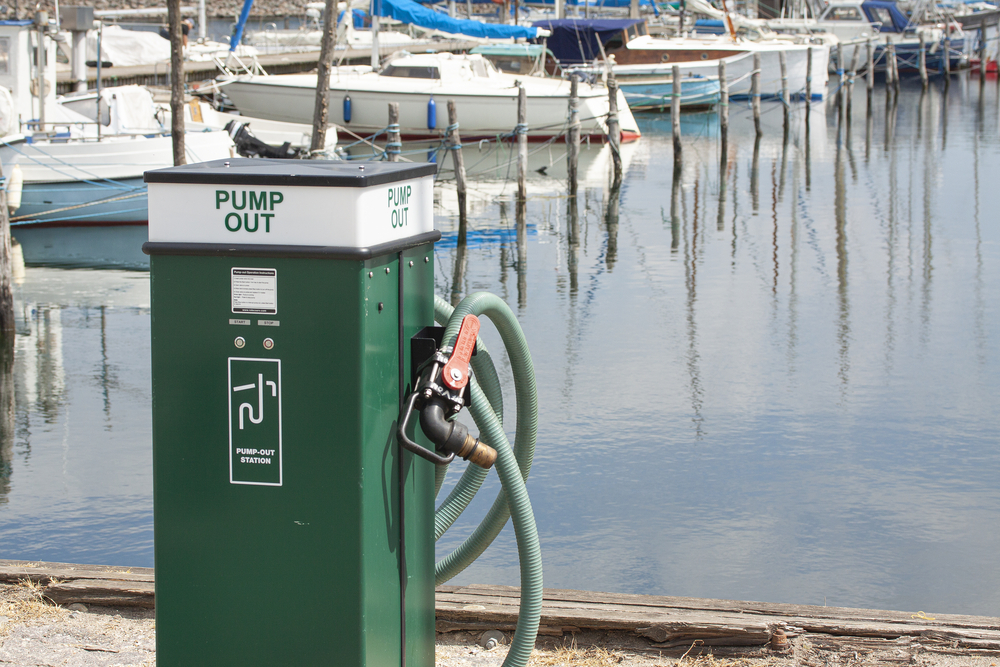
Houseboats are an extremely popular option for people who want to live aboard their boats. It’s not uncommon for houseboats to be used as a permanent home. As such, they may be a hassle if not maintained properly. It’s important to know that the upkeep of a houseboat can be a challenge. It’s not all rainbows and sunshine, especially dealing with waste and sewage disposal. So, how should you deal with your unwanted waste?
Generally, human wastes are collected into sewage tanks, transported, and sucked out at a pump-out station. Alternatively, they can be disposed into the coastal waters beyond 3 miles offshore. As for general waste, trash, and recyclables, they are disposed of at the pumping station. On the other hand, houseboats that are permanently moored have their sewage lines directly connected to the onshore tank or any disposal facility.
You have to be extremely careful when disposing of waste in the open waters or you’ll get slapped with a hefty fine if you dump in what you are not supposed to. To avoid getting yourself into that kind of situation, you need to know the types of waste.
Table of Contents
The Different Types of Houseboat Waste
When you’re living permanently aboard your houseboat, all the waste has to be disposed of with great care since it may cause harm to the environment. There are many different types of waste that you may be generating, and each type has a different requirement for disposal.
General Waste
When we say general waste, we mean any garbage (paper, leftover food, container, plastics etc.). Never ever dump these in the water. These are the kind of trash that will get you into trouble, especially non-biodegradable(plastics). These should be disposed of ashore at pump-out stations.
Gray Waste
If you have no idea where gray waste comes from – this waste comes from your kitchen, sink, showers, and laundry water. They contain food particles, grease, oils, and soap. If you have a food waste disposal unit at your sink, this is where food waste is ground up into fine particles and flushed down the gray water tank. There is more leniency when it comes to gray waste. Most places allow discharging gray water overboard but you still have to note that many marinas and ports now prohibit dumping gray waste. However, lakes, rivers, and streams are off-limits and they should also be transported to the pump-out stations.
Black Waste (Human Waste)
Finally, black waste comes from human fecal and urinary waste, from the toilet. This waste generated onboard is stored in the black water tank and transported to pump-out stations once it is filled. This disposal method will incur a reasonable fee for each pump-out. Now, you might have come across forums or heard of dumping sewage water in coastal areas 3 miles out. That’s because you can, provided if your houseboat is equipped with Marine Sanitation Device (MSD) of type 1 or 2. Whereas MSD type 3 strictly needs to adhere to disposal at pump-out stations.
To break it down further for you, type 1 and 2 MSD treats black waste onboard before they are allowed to discharge. However, waste in type 3 MSD is stored in holding tanks that do not have treatment capabilities. If you want to understand more about MSD, here is the link to EPA that covers everything you need to know on Clean Water Act (CWA).
To gain a deeper understanding, if this way of disposal is what you are concerned with. A large majority of the bacteria and other organisms in type 1 and 2 are biologically treated and disinfected before dumping. Then again, dumping in lakes, rivers, and streams is a big fat NO.
While there are many different types of houseboat toilets, some are not permanent toilets and MSD requirements are not applicable. Some examples include:
Porta potty, composting, cassette and incineration toilet.
Pump-out or Dump out?

The natural human instinct is to approach the simplest way when dealing with unpleasant things. This is most certainly the case when it comes to sewage. Dumping out seems to be the cheaper and easier option. Every year, 1 billion gallons of sewage are dumped into the ocean worldwide. This is a huge amount of waste discharged into our oceans and it’s the leading cause of ocean pollution. Although it is still legal, you can do your part by using a pump-out service to keep our environment and waterways clean.
There are many pump-out facilities that are available near the marinas, fuelling point, and dump station. It will cost you anywhere between $10-$30 depending on the size of your waste tank. Please be sure to pump out the sewage water properly.
You should find out what pumping stations are available near your marina – when they are open, closed, and seasonal closures. This will help you to make planned waste disposal instead of making an extra trip.
*State anti-littering laws may also apply to your boating waters.
Maintaining & Cleaning the Houseboat
In order to keep a houseboat clean and maintain its beauty, you will need to make sure that you are always doing regular cleaning with the right products and cleaning methods.
Black/Gray Waste System
Holding tanks are a critical part of your marine sanitary system. It gets really messy if your system starts to clog. Both gray and black water tanks have different purposes, so you should make sure to know what you should avoid throwing in. Sanitary products and wet wipes will jam up your pipes immediately and this is the last thing you’d want.
It’s important to note that the water level of your holding tank should be checked regularly to ensure that it’s not overflowing. Using tank treatment chemicals to flush your storage tank once in a while can definitely help you to keep your tank functional. There are many ways that cleaning chemicals can be used for your sewage treatment and it’s important to make sure that they aren’t harmful to your tank, pipes, or the environment.
Boat External
Head to the cleaning bay at the marina and have clean it regularly, especially for houseboats in ocean waters. You can pressure wash the entire structure but be careful of detergents and chemical draining in the water.
There are many products out there that claim it’s safe for your houseboat, but you’ll have to be careful about which ones you use. While most products need to be treated at a wastewater treatment plant to be truly non-toxic and biodegradable, some products require special consideration before they can be disposed of at a facility.
You can read more about some cleaning alternatives here.
Final Note:
As a houseboat owner, you should always be prepared to handle the disposal of waste. The last thing you want is unpleasant odors and discharge from the sewage line stinking up your home. If you happen to have a Y-valve, make sure it is secured (remove valve handle or lock it in place). This is to prevent accidental overboard discharge. If you are interested to find out more about black waste, do check out this post on Everything You Need To Know About Houseboats Toilet.
The next time you’re going to take a trip on your houseboat, be sure to take some precautions and make sure that you are prepared to handle the disposal of waste.
What other ways can you think of to dispose of waste? Let us know in the comments section below!
If you found this article helpful, then please share it with your fellow houseboat dwellers!

